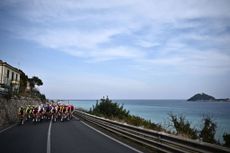Should we all be using flat shoes and pedals for bikepacking and gravel riding?
Are you afraid to transgress? It's time to forget about 'the rules' and really consider which pedals are best for bikepacking and gravel riding
- (opens in new tab)
- (opens in new tab)
- (opens in new tab)
- Sign up to our newsletter Newsletter
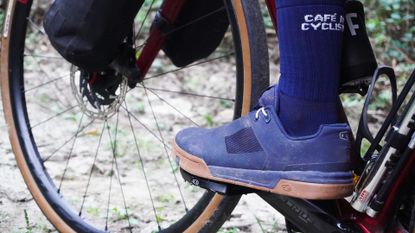

Perhaps surprisingly for a title that’s over 125-years-old – or maybe it’s precisely because of our long heritage – we are not insecure traditionalists here.
Ask the Tech Expert
This is the first in Cycling Weekly’s new ‘Ask the Tech Expert’ series where we’ll be delving into and answering any technical queries or thoughts you may have. Send in your questions to Anne-Marije Rook at anne.rook@futurenet.com
Naturally, we do hold an acute awareness of cycling’s past, but throughout our history we have been comfortable exploring a host of different avenues. Our weekly magazine even went by the title: ‘Cycling and Mopeds’ for a spell between the ‘50s and ‘60s...
With all that in mind, Cycling Weekly's Tech and Fitness Features Editors, Stefan and Anna, decided to give flat pedals a try on a two-week bikepacking adventure around Hungary and Slovakia – could it really be a better solution than the best clipless pedals (which you clip into) that they’re so used to riding?
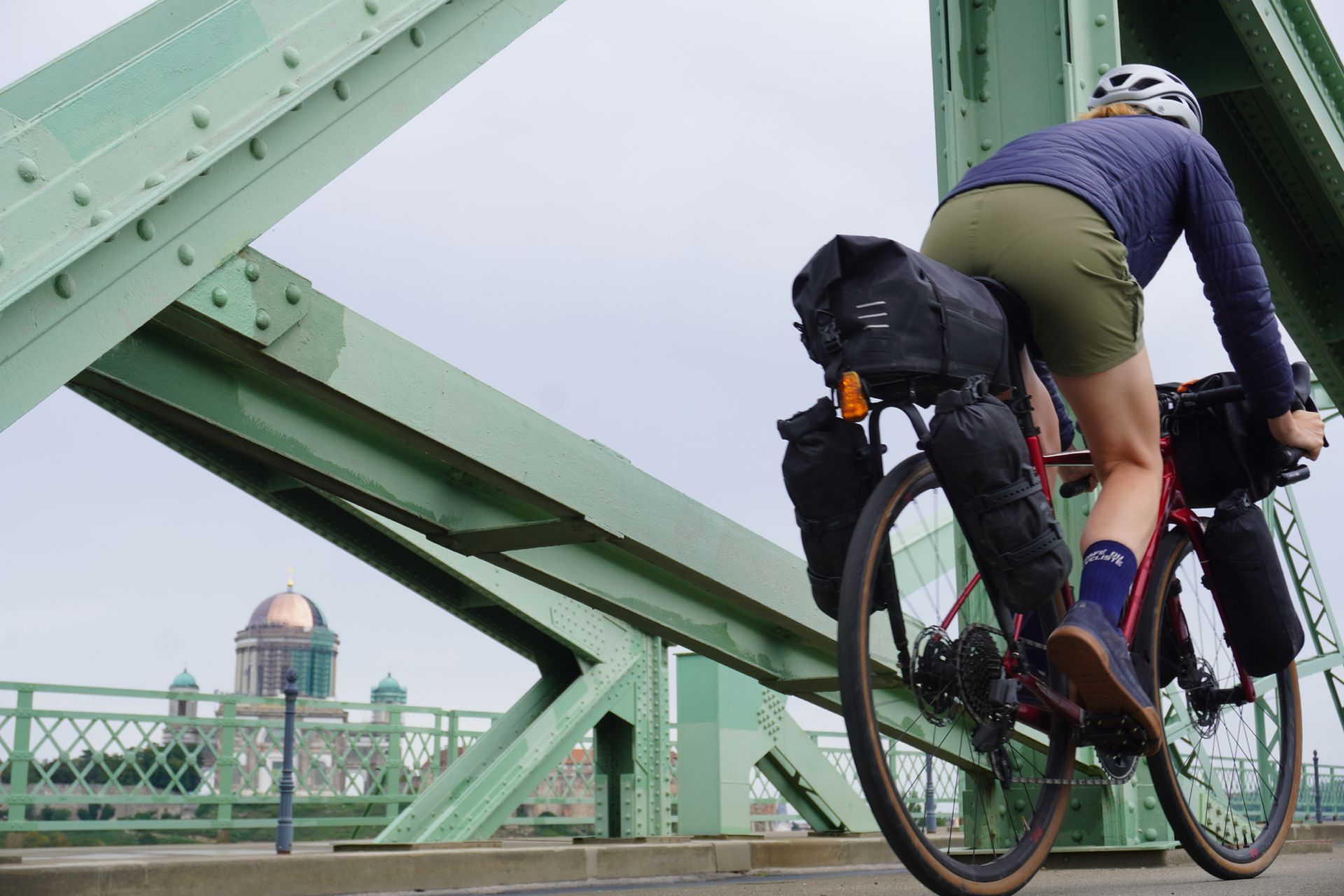
To put this to the test, Stefan paired Shimano's GR5 trail shoes with Raceface Aeffect pedals, while Anna opted from the Crankbrothers' Stamp Lace and a set of Crankbrothers Stamp 3 Small pedals.
You can read about their bikepacking trip from Budapest in Hungary to Bratislava in Slovakia; the mountains, the castles, the gravel and the rain, over here; a deep dive into their kit choices for the two week bikepacking trip around Central Europe can be found right here; and Anna’s Fara F/All-Road Series 2 gets discussed in its own full bike review here - it's certainly one of the best bikes for bikepacking so it's a bike that's well worth finding out more about.
Otherwise, read on for a surprising number of benefits – and a few limitations – of bikepacking with the best flat pedals. There’s much which might surprise you…
When are flat pedals best for bikepacking?
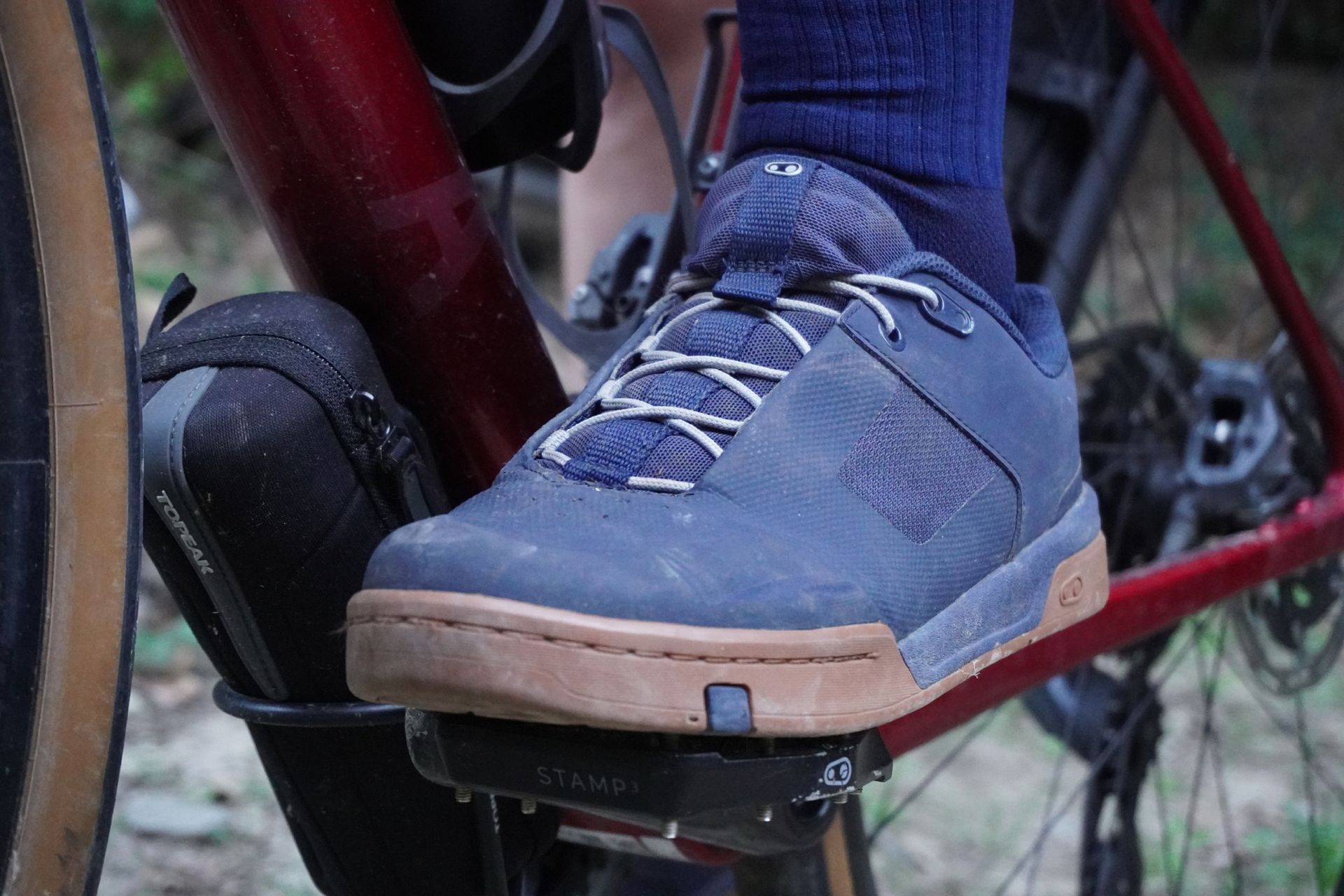
As systems have their pros and cons, we’ll weigh up exactly which we think is best in our conclusion just below. For now, we’ll cover the benefits of each system and, by extension, their limitations as well.
Now, you will notice we do only have one benefit for flat pedals listed here – but it’s a hugely important one, as you're going to see.
Walkability
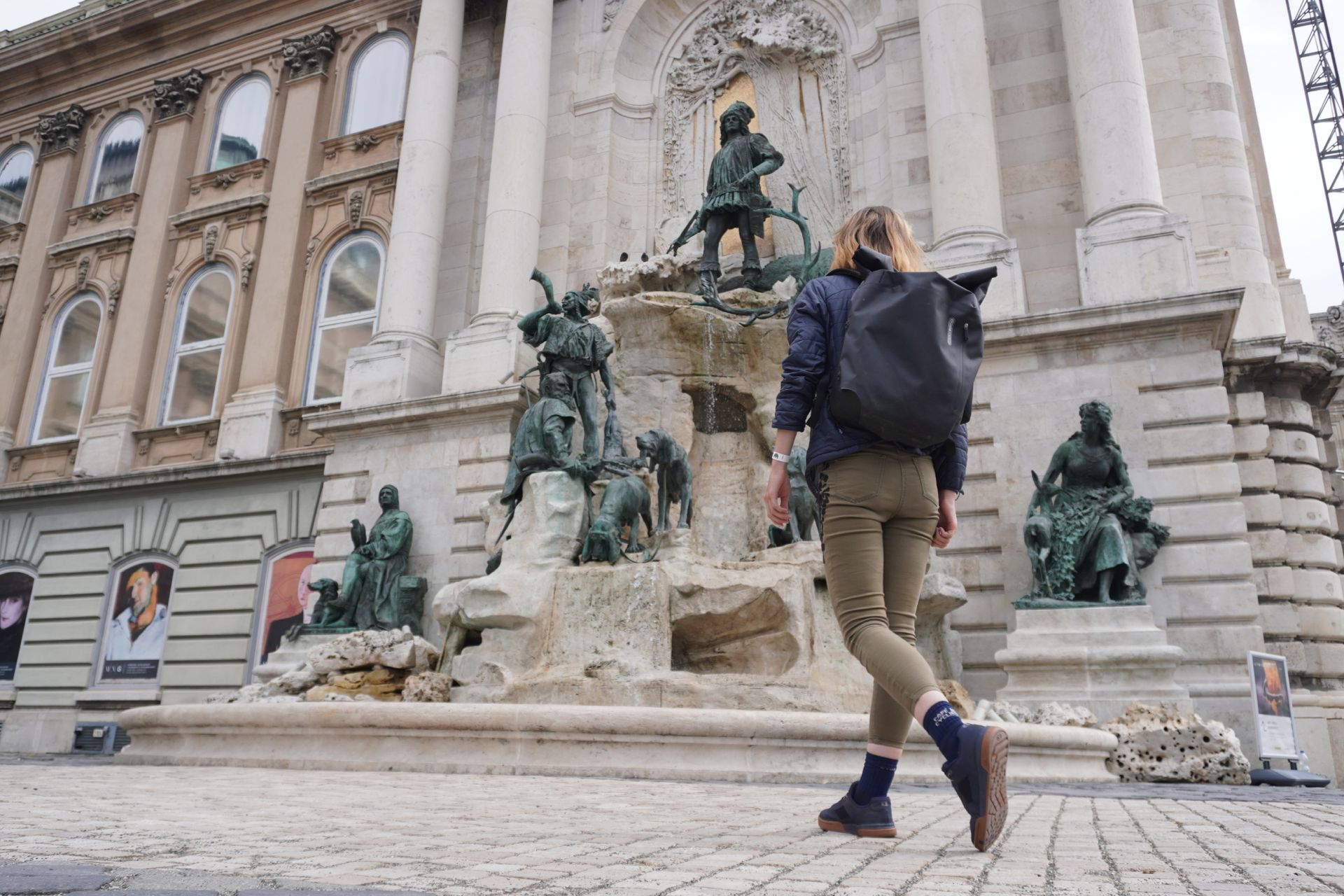
This was a huge sticking point for us. We didn’t plan this loop for Hungary and Slovakia as simply a backdrop to a mile-munching ultra-distance ride. If the intention was for this to be wholly a feat of endurance, well, then the same result would have been achieved if we’d just done it on the turbo.
No, we wanted to explore and learn as much as we could about these two countries that we knew so little about beforehand and, in our opinion, bikes are absolutely the best way to go about this!
On two wheels you can adventure so much deeper into the hills and mountains than you can with a car. You explore the backroads and small villages that would otherwise be completely missed whizzing by on a motorway. Bikes give you the freedom to rock up at whatever castle, cathedral, museum – or anything else – and not worry about finding a place to park.
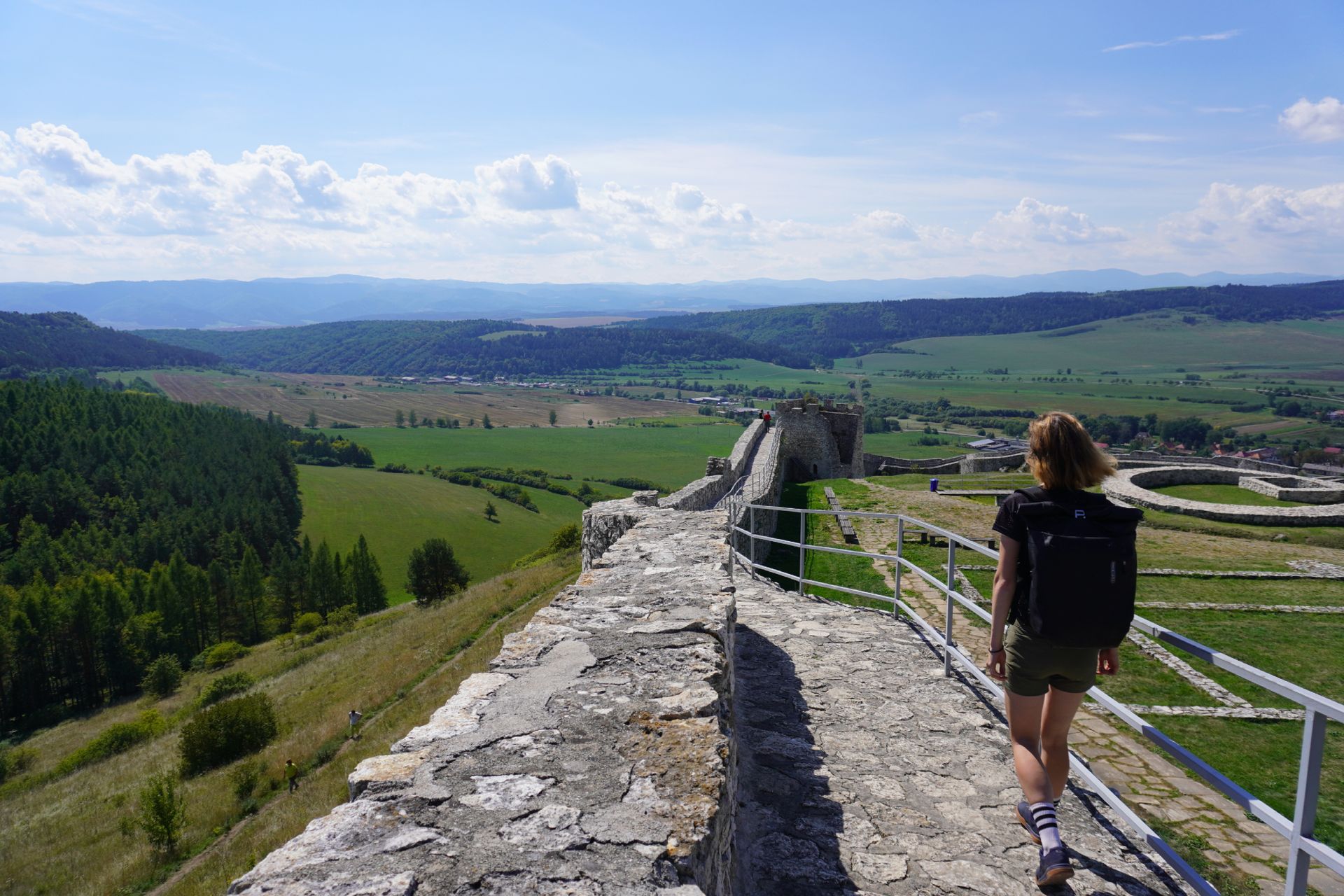
On the flipside of this, stopping off for all those amazing sights and experiences – a 16km gorge walk on the sixth day fully included – does mean you need a pair of shoes that can fully handle some serious walking.
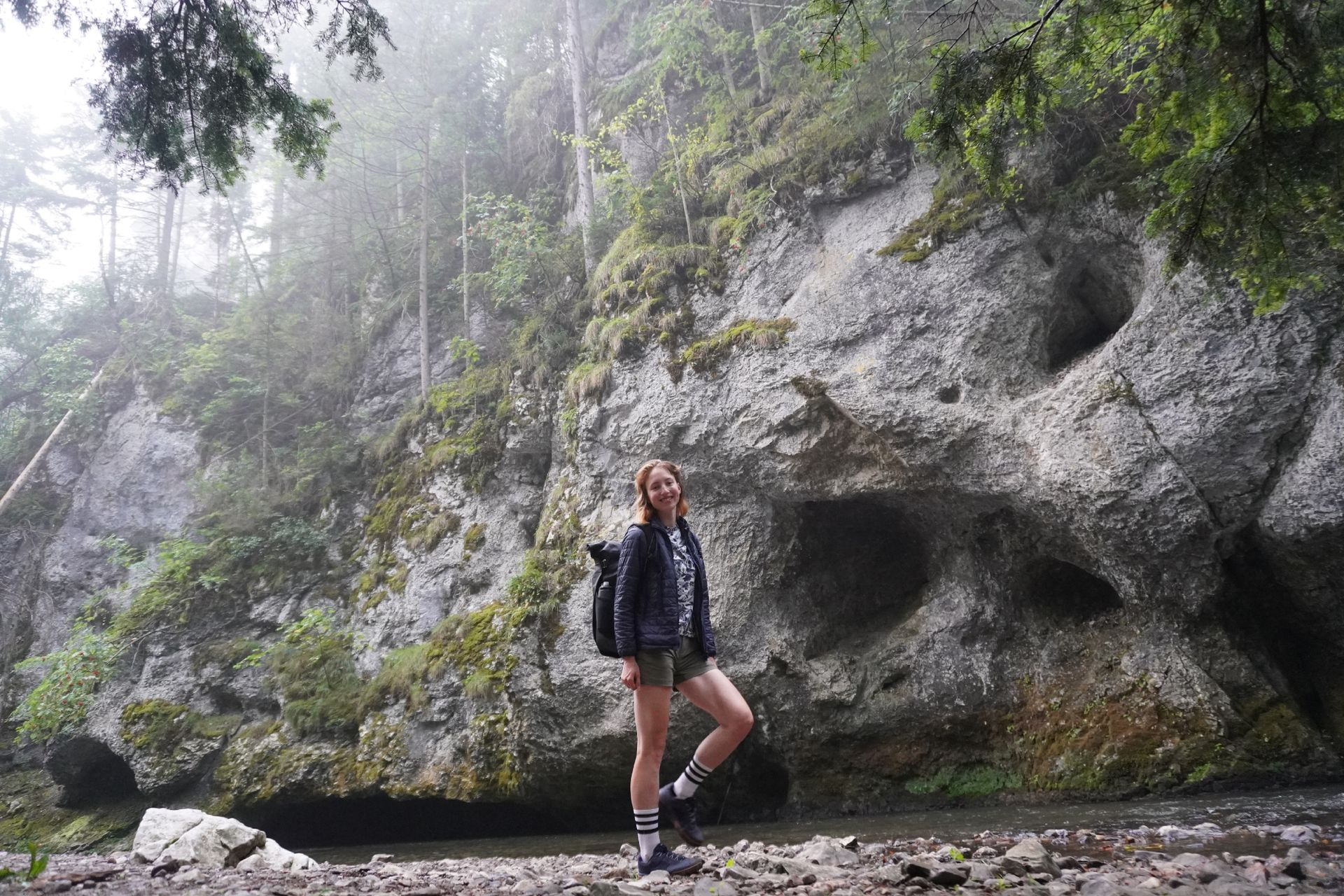
Gravel and mountain bike shoes designed for two-bolt cleats are fully versatile enough for all-day epics. But they just don’t have a flexible enough sole for the sheer volume of time that we were going to spending up on our feet.
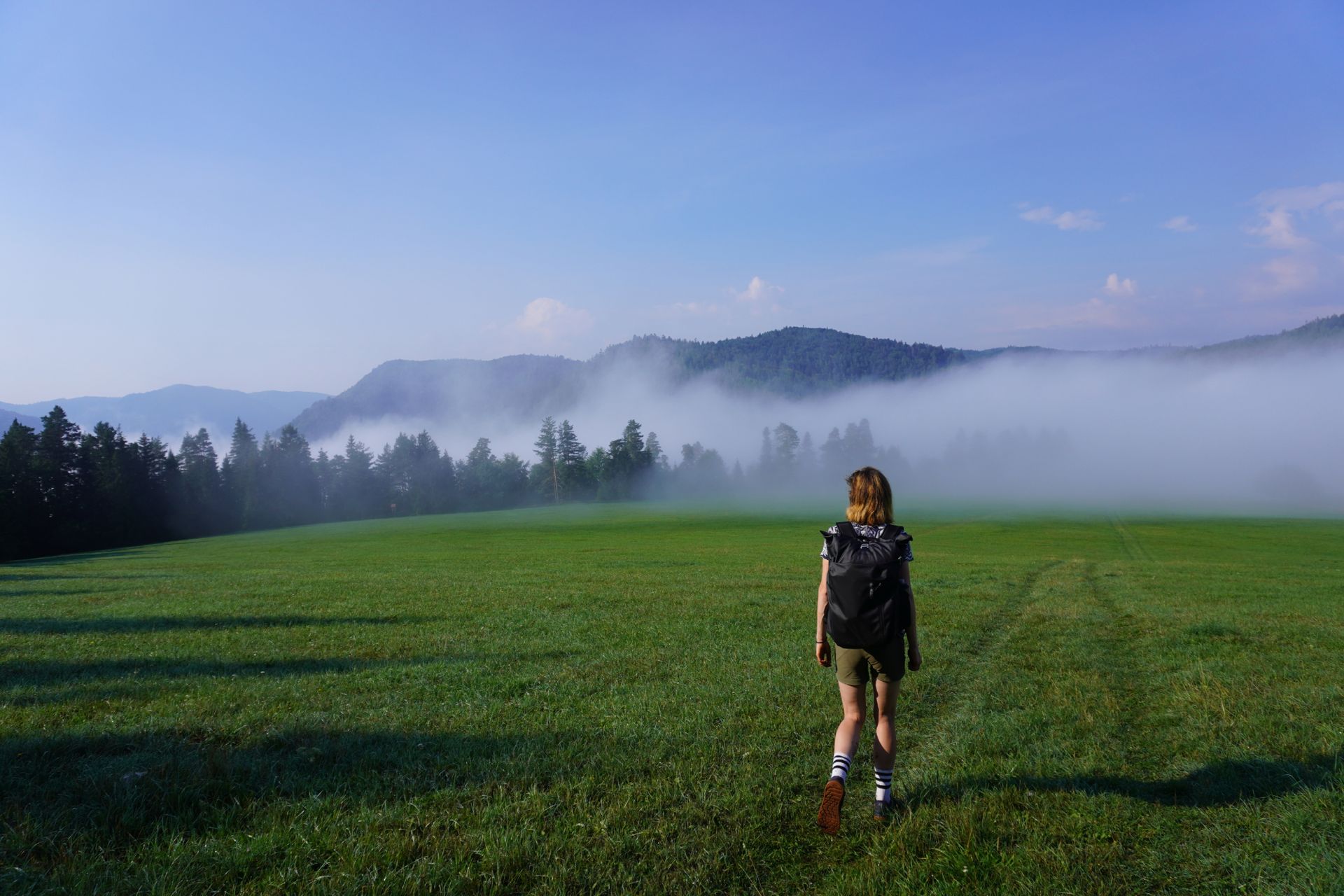
But that’s not to say that a pair of trainers or walking shoes would have been a viable option – we still had plenty of miles to cover on the bike. With regular days of around five hours in the saddle, we needed shoes that could fully keep up with the on-the-bike demands too.
Enter the flat soled MTB shoe.
Although designed for those higher levels of ‘gnar’ which are the perverse of bikes that boast suspension travel longer than even the most aggressive roadie stem – in the Enduro racing format at least – there is a lot of time spent pedalling during the liaisons between timed downhill segments. It’s not as though this style of shoe can be said to shy away from some serious riding.
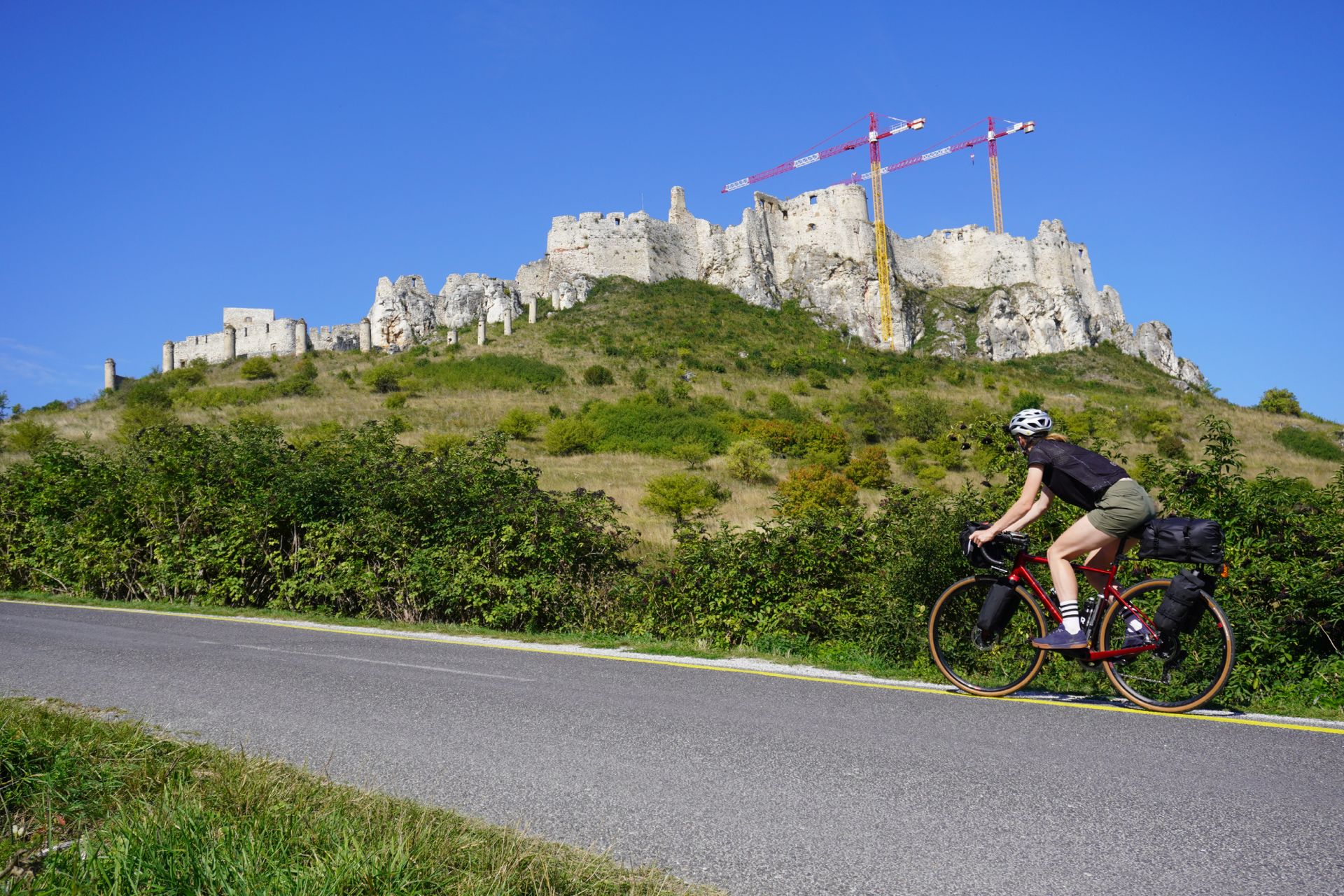
As a consequence of the wide platforms that off-road flat pedals are designed with, the soles don’t need to be anywhere near as stiff as on shoes designed around tiny two bolt cleats.
On the contrary, with the amount of hike-a-bike packed in by mountain bikers who choose to ride natural trails, flat soled MTB shoes fully need to flex and be sufficiently walkable. Plus just being robust enough generally for the hammering they’re put through.
Dare we say it, but they also look a little better than a pair of Boa-dialled XC-style gravel shoes. Don’t get us wrong, as part of a pure, gravel racing (or riding setup) Boa dials don’t look out of place at all. But in the restaurants and other establishments we were frequenting on our bikepacking adventure, it was nice to be wearing a more ‘normal’ design of shoe that didn’t stand out.
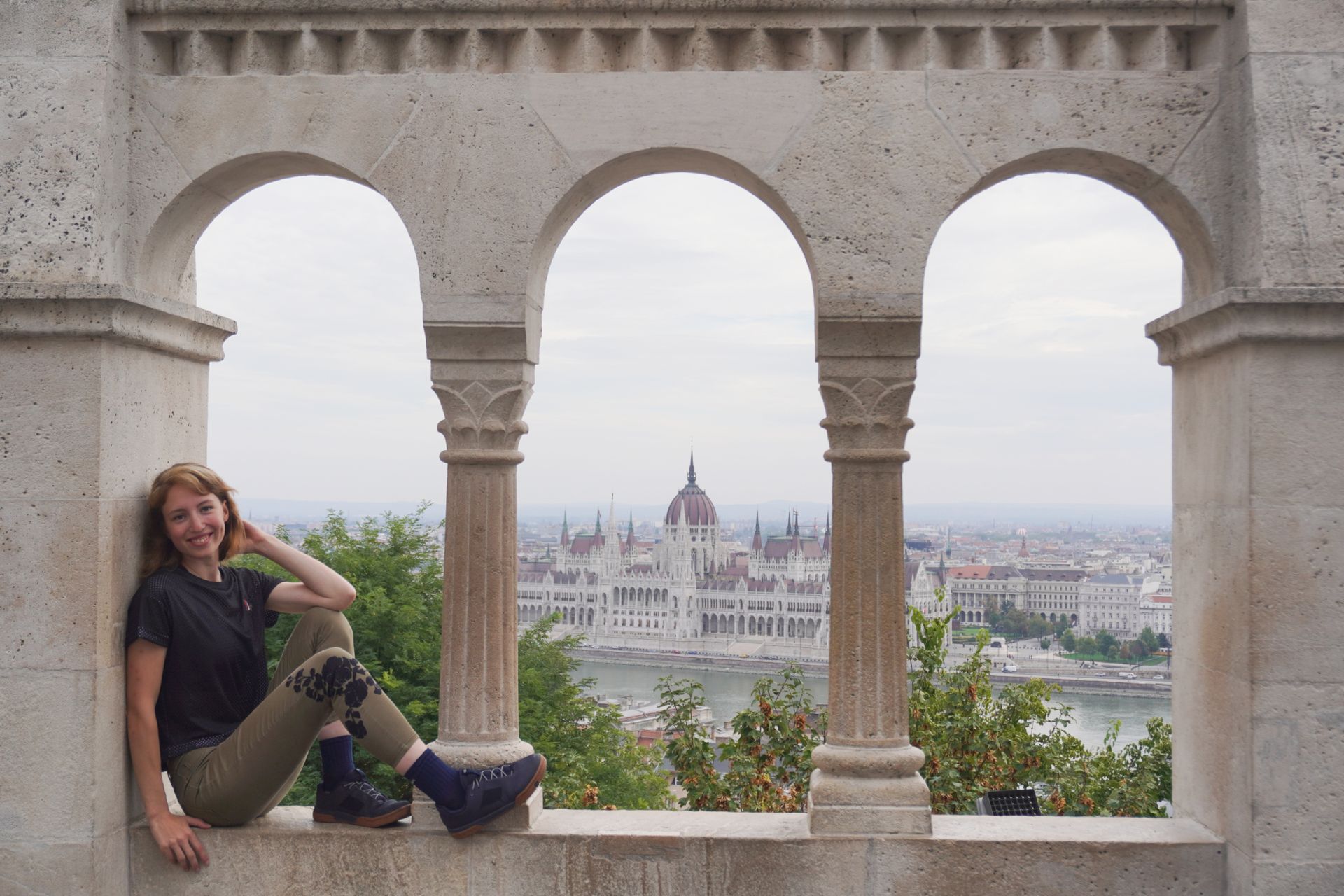
The Crankbrothers Stamp Lace looking good at the Fisherman's Bastion on Buda Castle Hill on the west side of Budapest.
When are clipless pedals best for bikepacking?
Foot placement

You might think it would be easier to get your foot placement right on a set of flat pedals. Just slap your foot on and away you go – no fumbling about trying to locate the cleat and clip yourself in.
Perhaps this is just a function of how just long it's been since we learnt to cycle with clipless pedals, but we found getting our foot placement ‘just so’ on the flat pedals a much more difficult experience than with a pair of double-sided SPDs.
Yes, it might be a little difficult to get the cleat-pedal interface lined up sometimes, but once you’re in, you’re in – and in exactly the same position each time. Absolutely ideal, once you've set your cleat placement on your cycling shoes correctly.
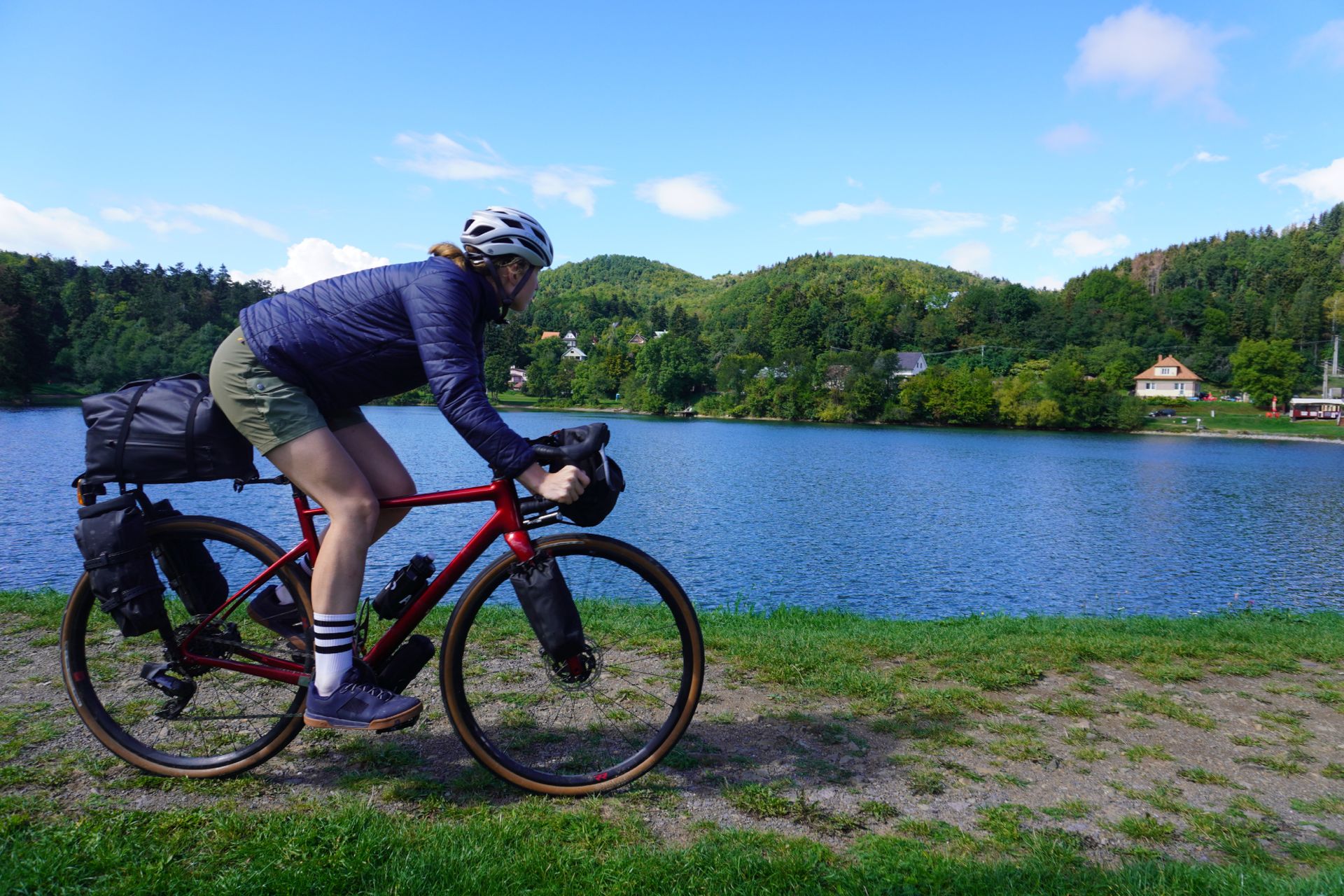
Whereas with flat pedals, it’s so easy to slightly misplace your foot and get yourself into a position that feels just slightly off. Readjusting your foot isn’t so simple, either. With the pins gripping your foot in place, you can’t just shuffle about – you need to lift your foot fully off the pedal and place it straight back down. Sometimes you then end up in the right position, other times you don’t.
In the same way that inappropriately placed cleats can not only cause discomfort and a reduced power output, they can also increase the likelihood of suffering from common cycling injuries, and a flat pedal / shoe opens you up to not quite getting the placement right every time.
Steep climbs and out-the-saddle efforts
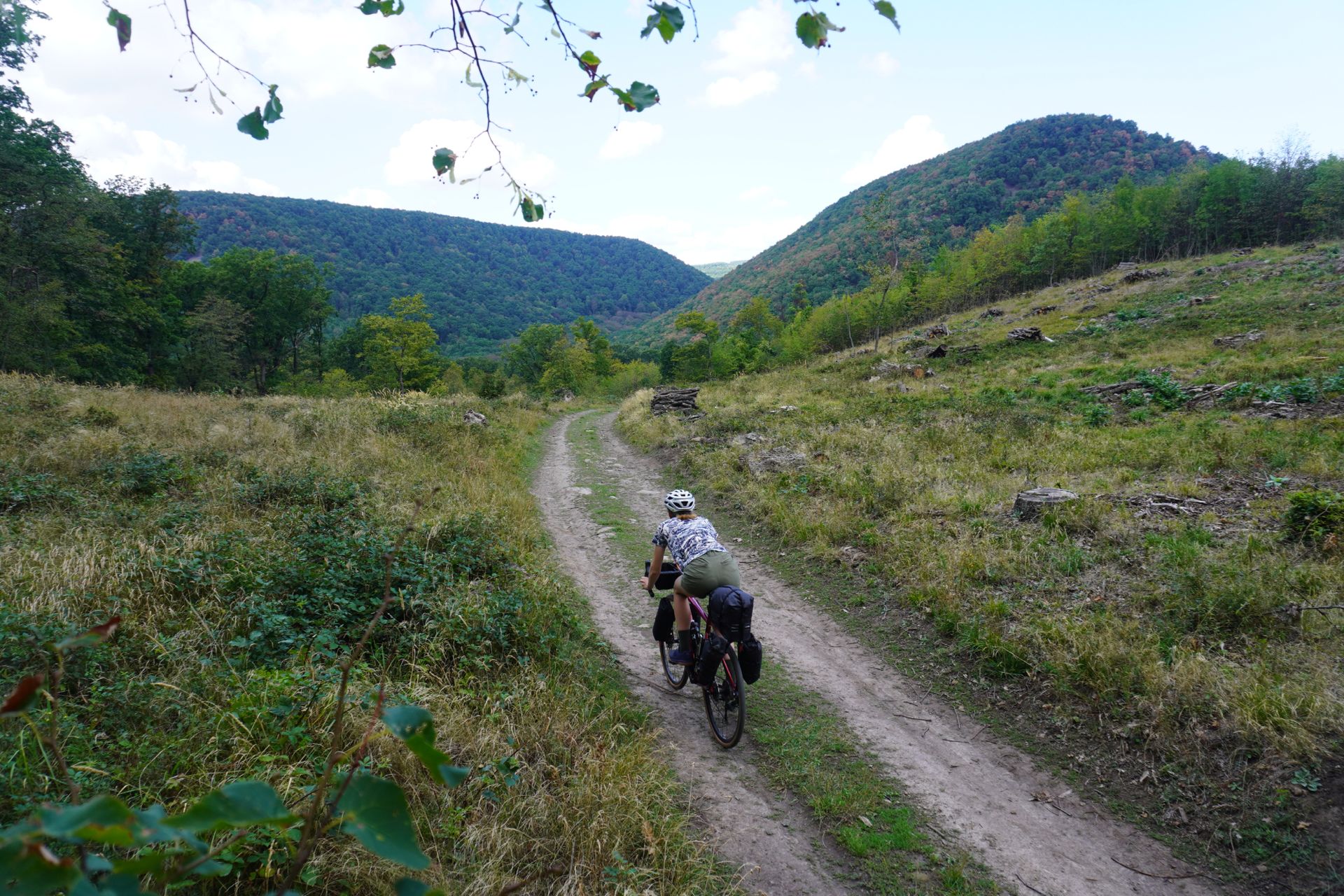
Again, this might just be down to how familiar we are with clipless pedals. But it’s worth pointing out that this was still an issue we had at the end of the trip – so whether or not it is down to bad habits, it definitely isn’t something that you (or, at least, we) can quickly adapt to.
Just to back up a little bit, there are some people who will obsess over the power distribution of their pedal stroke: consciously trying to maximise every last watt as they scrape through the bottom at around six o’clock and pull up on the pedals as they return to the 12 o’clock position.
But that’s not us. We have considered our ‘pedalling smoothness’ before, but we’ve both found ourselves better off just going with what feels natural, rather than trying to completely rework our stroke.
As such, we both had quite a surprise when it became apparent just how much we really do end up scraping through the bottom of the stroke and pulling up on the pedals! Especially on brutally steep climbs – but also even when just climbing out of the saddle – we were forced into adjusting our pedalling technique so that we stopped simply lifting our feet off the pedals.
We did get better at this. But, as we mentioned, it still didn’t come naturally to us even at the end of the trip.
But in the non-performance-oriented context of multi-day bikepacking, being slightly less efficient on the hills wasn’t really much of a concern for us. But it does mean that any ride where there is the slightest element of competition, we would be swapping back to SPDs.
Overheating

As flat shoes are usually built for trail riders who are blitzing it down technical trails and then taking it a little easier cycling back up the hill, breathability is a feature that’s often a little lacking compared to the best gravel bike shoes with SPD compatability.
Although we weren’t exactly cranking up the pace, there were some very hot days and our flat shoes didn’t do too much to help matters. Of course, there are more and less breathable models, but on the whole, flat pedal shoes are a bit more overbuilt than your typical gravel equivalent.
Just how much this is an issue will depend from person to person. For us, it wasn’t so hot as to outweigh the other benefits that flat soled shoes bring.
Aggressive pins
Finally, the pins. They’re absolutely brilliant when riding, keeping our feet essentially glued in place. But when it came to the transition on and off the bike, they really were a bit of a hazard.
Less clumsy humans will have less of a problem, but Stefan in particular ended up looking like he’d been wrestling a bear after catching the back of his calf one time with his pedals.
Just be more careful’ isn’t particularly useful advice. For most things in life we prefer to take more of a systems approach, and applying that to pedals would suggest moving to a pedal/shoe combination which perhaps doesn’t rely on multiple pointy bits of metal to keep your foot in place...
Best overall...?
So there are solid pros and cons to each setup. The aggressive pins, foot position and inability to pull up on the pedals are all clear negatives of flat shoes and pedals. But the freedom they gave for exploring further and wider off the bike was a benefit that we absolutely wouldn’t want to compromise on.
Essentially, what we would really like is an SPD compatible shoe which just has a bit more flex than is offered by most of the designs on the market. We've been testing a few options, so check out our guide to the best commuter cycling shoes for urban and gravel use for some recommendations.
Potentially, it’s simply not possible to balance a stiff enough pedalling platform with a flexible enough shoe. But there are enough SPD style pedals out there which incorporate a supporting cage and which doesn’t have pins – so that doesn’t necessarily need to be too much of an issue.
Plus, we’ve both done enough riding with basic trainers on cageless SPDs at various times in our pasts to know that you really don’t need much support if you’re not looking for the ultimate in power transfer.
So, we’re going to be keeping an eye out for anything that might be suitable and we’ll let you know if we find something. In the meantime, if you have any suggestions, they would be more than welcome!
If you're interested in the full write up of our bikepacking trip from Budapest to the mountains of Slovakia, you can head straight over here. Find the breakdown of our chosen kit for two weeks bikepacking around Central Europe here - what worked well and what didn't quite.
Find out more about what you need to take in our guide on everything you need to go bikepacking.

After winning the 2019 National Single-Speed Cross-Country Mountain Biking Championships and claiming the plushie unicorn (true story), Stefan swapped the flat-bars for drop-bars and has never looked back.
Since then, he’s earnt his 2ⁿᵈ cat racing licence in his first season racing as a third, completed the South Downs Double in under 20 hours and Everested in under 12.
But his favourite rides are multiday bikepacking trips, with all the huge amount of cycling tech and long days spent exploring new roads and trails - as well as histories and cultures. Most recently, he’s spent two weeks riding from Budapest into the mountains of Slovakia.
Height: 177cm
Weight: 67–69kg
-
-
 High-end bikes still in demand says Giant, as it announces 12.5% revenue increase
High-end bikes still in demand says Giant, as it announces 12.5% revenue increaseBut like much of the industry the Taiwanese manufacturer is also experiencing a surplus of low to mid priced stock
By James Shrubsall • Published
-
 Milan-San Remo 2023: Route and start list
Milan-San Remo 2023: Route and start listAll you need to know about the first Monument of the 2023 season
By Ryan Dabbs • Published

